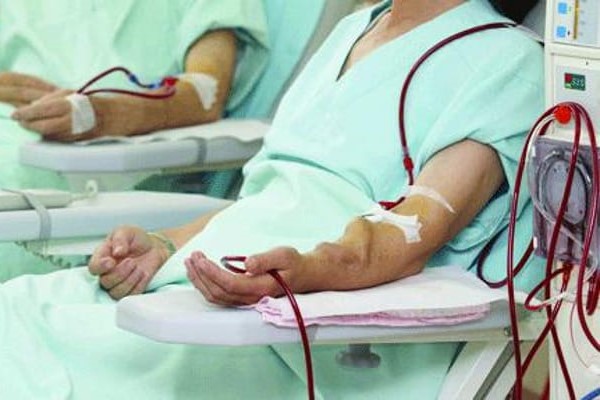
Kidney function replacement treatment: dialysis
Dialysis is a kidney function replacement treatment that is performed when the kidneys are no longer able to cleanse the body of the waste produced each day by metabolism and lose their ability to eliminate excess water
When is dialysis necessary?
The condition whereby the kidneys are no longer able to perform their functions is called renal failure.
This condition can occur very quickly and be reversible or progress over a long period of time and be irreversible.
In the first case we speak of acute renal failure: dialysis may be carried out for a short period of time until the kidneys resume functioning.
In the second case, we speak of chronic renal failure and dialysis treatment will be continued until a kidney transplant is performed.
There are two types of dialysis:
- Hemodialysis;
- Peritoneal dialysis.
Haemodialysis
Haemodialysis is a purification technique that uses a machine to pass blood, pushed by a pump, through a filter that removes waste products from the blood, which are normally eliminated with urine.
The haemodialysis machine removes not only the waste accumulated by the body, but also excess water.
There are numerous technical variants of haemodialysis, which allow the method to be customised and adapted to the characteristics and needs of the individual patient.
Hemodialysis requires a flow of blood that cannot be provided by a normal vein. It is therefore necessary to artificially create a suitable access to the blood vessels, which is called an arteriovenous fistula, or to use a special central venous catheter.
An arteriovenous fistula is a surgically created connection between an artery and a vein in the arm (usually in the forearm), which provides a high blood flow sufficient for haemodialysis.
The need for an arteriovenous fistula for haemodialysis should be considered at an early stage of chronic renal failure in order to limit the puncture of arm veins.
Therefore, blood sampling in children with chronic renal failure should be performed from the hand veins whenever possible in order to preserve the arm vessels.
In the case of dialysis in patients with acute renal failure (for whom recovery of renal function is expected within a short period of time), or in patients with chronic renal failure for whom a well-functioning arteriovenous fistula is not available (small patients, inadequate arm vessels), venous catheters may be used, either surgically inserted into large veins in the neck or thigh or inserted by direct puncture under ultrasound guidance.
In patients on chronic dialysis therapy, haemodialysis sessions last 3-4 hours and are carried out 2-4 times a week (up to 6 times in special clinical situations).
During the first few dialysis sessions, the child may experience headache, nausea and malaise. Later on, he/she gets used to the dialysis and can spend the whole session without any major disturbances (often reading, watching television or doing homework).
Peritoneal dialysis:
Peritoneal d. is a technique that requires the insertion of a catheter into the child’s peritoneal cavity (inside the abdomen).
Through this catheter, a liquid containing mainly salts and glucose is introduced, in a composition that varies according to need.
Once in the abdomen, the dialysis fluid comes into contact with the peritoneal membrane and gradually comes into balance with the body’s fluids, allowing accumulated waste and excess fluid to be eliminated.
During the course of peritoneal dialysis, the dialysis fluid is replaced several times at regular intervals.
Peritoneal dialysis can be performed manually or using an automated peritoneal dialysis machine.
The one most commonly used in children is automated night dialysis, which is performed at night using a machine that moves the dialysis fluid in and out of the peritoneal cavity and has alarms to signal problems and malfunctions. The use of this machine is taught to parents during a 2-3 week course held in the hospital.
Read Also:
Emergency Live Even More…Live: Download The New Free App Of Your Newspaper For IOS And Android
ECMO: How It Works And Its Usefulness Explained To The Citizen


